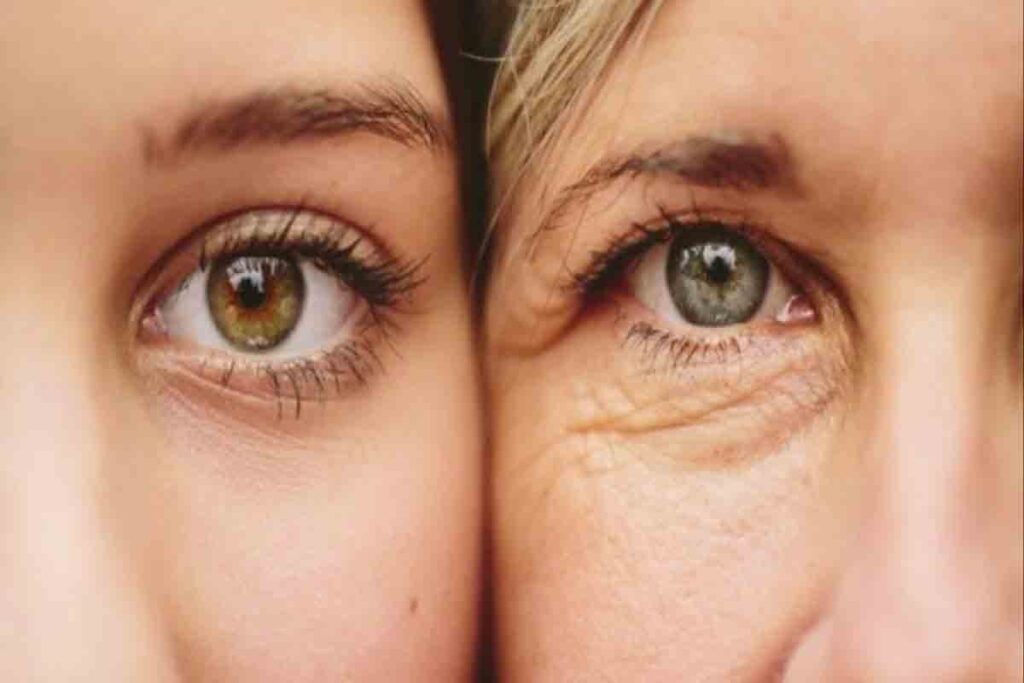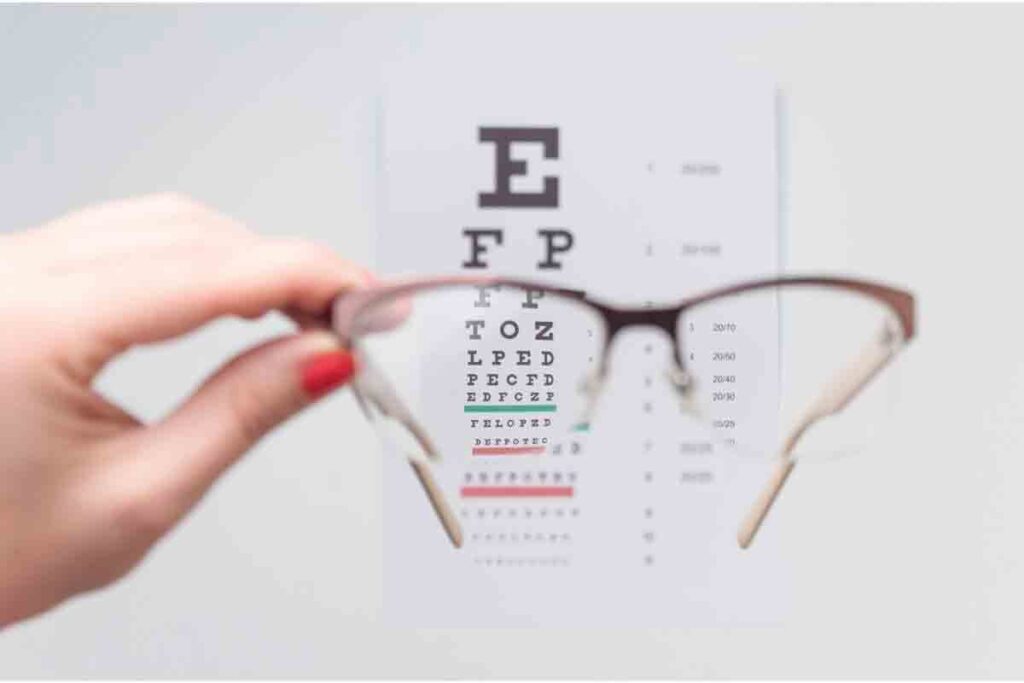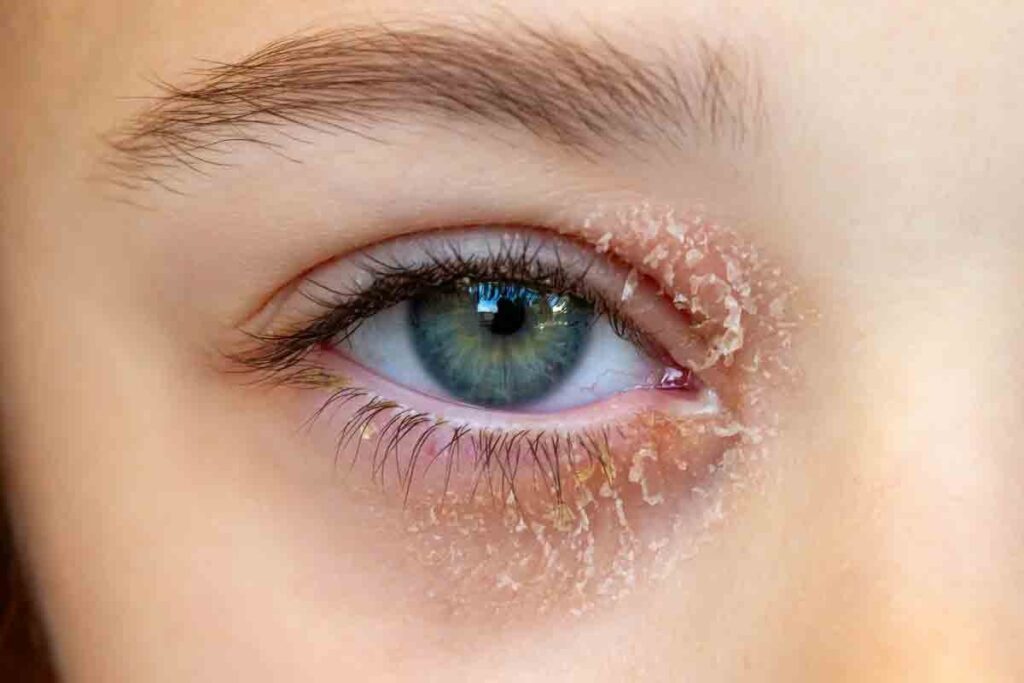
Ever thought about what your eyelid color says about your health? At LivHospital, we teach you to listen to your body. A healthy lower eyelid is usually a bright pink, showing good blood flow and enough oxygen.
Your eyes can tell a lot about your overall health. Eye exams do more than check your sight—they can also reveal early signs of underlying conditions. For instance, if your eyelid looks pale, it could be a sign of anemia. This eyelid pale appearance often means your body doesn’t have enough red blood cells or hemoglobin, which are essential for carrying oxygen throughout your body.
Key Takeaways

The inside of your eyelids can tell a lot about your health. It’s key to know what’s normal. The color and look of your eyelids show your health status.
A healthy person’s eyelids are usually pink or red because of the many blood vessels there.
The inside of your eyelids has lots of blood vessels. This is why they look pink or red when healthy. The blood flowing through these vessels makes them this color.
If your eyelids look pale or yellow, it might mean there’s a health problem. You should see a doctor to check.
The eyelid has many layers, like skin, muscle, and conjunctiva. The conjunctiva is the thin membrane over the white part of your eyes and eyelids.
The conjunctiva is very vascular, with lots of blood vessels. This is why healthy eyelids are pink.
Knowing how the eyelid is made helps us understand why color changes are important.

The color of your eyelids can tell a lot about your health. If they look pale, it might mean you have anemia. A healthy eyelid is usually a deep red or pink because of lots of blood.
People often say pale inner eyelids look “washed out” or “less vibrant”. Doctors call this condition pallor. It can be a sign of iron deficiency anemia, even before other symptoms show up.
Some signs of pale inner eyelids include:
Not every change in eyelid color is a worry. But if paleness lasts or changes suddenly, see a doctor. If your inner eyelids stay pale, talk to a healthcare provider to find out why.
Key factors to discuss with your healthcare provider include:
By checking your eyelids and talking to a doctor, you can stay healthy. This helps catch any problems early.
Anemia is when you don’t have enough red blood cells or hemoglobin. This can make your eyelids look paler. Less hemoglobin means less oxygen for your eyelids, making them appear less colorful. This is most noticeable in the inner eyelids, which are usually more vibrant.
Anemia makes tissues look paler because of less hemoglobin. Hemoglobin carries oxygen and gives blood its red color. With less hemoglobin, your skin and eyelids can look pale or washed out.
A study found that the inner eyelid can show signs of anemia. Checking the inner eyelid is a simple way to spot these signs.
Iron Deficiency Anemia and Eyelid Appearance
Iron deficiency anemia is common and affects eyelid color. Iron helps make hemoglobin, and without enough, you can’t make enough red blood cells. This leads to pale inner eyelids.
People with iron deficiency anemia might see their inner eyelids as pale or white. This can be a sign to get checked by a doctor.
Other anemias can also change eyelid color. Vitamin deficiency anemia, for example, can make eyelids look different. So can anemia from chronic diseases.
Knowing about different anemias can help you understand changes in eyelid color. If you’re worried, talk to a doctor.
The color of your eyelids can show if you have anemia. Doctors often check the eyelid color to spot anemia. “A pale or white inner eyelid can be a clear sign of anemia,” doctors say.
Doctors use many ways to check for anemia. One easy way is to look at the eyelid color. A healthy eyelid is pink or red. But, someone with anemia might have pale, white, or yellowish eyelids.
Doctors also look for other signs like pale skin and tiredness. They might do blood tests to be sure.
You can check your eyelid color yourself. Just pull down your lower eyelid and look in a mirror. A healthy eyelid is bright red or pink. If it’s pale or white, see a doctor.
Remember, checking yourself isn’t the same as a doctor’s check-up. If you’re worried, talk to a healthcare expert.
Photos can show the difference between healthy and anemic eyelids. These pictures help doctors and patients understand anemia better.
A healthy eyelid is pink. An anemic eyelid is pale or white. Pictures like these help teach about anemia signs.
“Understanding the visual signs of anemia can lead to earlier diagnosis and treatment, improving patient outcomes.”
Medical Expert
By using doctor checks, self-checks, and photos, we learn more about anemia. This helps us understand its effects on our bodies.
Pale eyes can be a sign of anemia, a condition with low hemoglobin levels. Anemia affects millions, causing fatigue and serious health issues. Knowing the link between pale eyes and anemia is key for early detection and treatment.
Pallor, or paleness, is a common symptom of anemia. It happens because of low hemoglobin levels. Hemoglobin carries oxygen in red blood cells.
When hemoglobin levels drop, the skin and mucous membranes, like the inside of the eyelids, appear pale. This is because there’s less oxygen being delivered to tissues.
Anemia can be caused by iron or vitamin deficiency, chronic diseases, or genetic disorders. The effect on the eyes can be similar. Checking the inside of the eyelids is a simple way to spot anemia.
People with anemia may also show other signs. These include fatigue, weakness, pale skin, shortness of breath, and dizziness. Anemia can also change nail appearance, making them brittle or spoon-shaped.
| Physical Sign | Description |
| Fatigue | Feeling extremely tired or weak |
| Pale Skin | Skin appears lighter or washed out |
| Shortness of Breath | Difficulty breathing or feeling winded even at rest |
Spotting these signs early can lead to getting medical help. This can result in a timely diagnosis and treatment of anemia.
Understanding the link between pale eyes and anemia helps people stay healthy. It encourages them to seek medical care when needed.
Eyelid color can tell us a lot about our health. Changes in eyelid color can mean there’s something going on inside our body. Anemia is one known cause of pale eyelids, but other health problems can also change how our eyelids look.
Yellow eyelids might mean you have jaundice. Jaundice happens when there’s too much bilirubin in your blood. This can be because of liver problems or blocked bile ducts. It makes your skin and eyelids look yellow.
Causes of Yellow Eyelids:
Red or inflamed eyelids might mean you have blepharitis. This is an eyelid inflammation caused by infection or irritation. Other color changes, like blue or dark, can be from vascular problems or melanin buildup.
| Eyelid Color Change | Possible Causes |
| Redness/Inflammation | Blepharitis, allergies, infections |
| Blue/Dark Discoloration | Vascular issues, melanin deposits |
Many health issues can change how your eyelids look. For example, thyroid problems can make your eyelids swell or pull back. Knowing these changes can help doctors find what’s wrong.
Key Systemic Conditions:
If your eyelids don’t look their usual pink, it’s time to see a doctor. Spotting these changes early can help get the right treatment sooner.
Anemia is a big problem worldwide, affecting many people and showing up as pale eyelids. It happens when there are fewer red blood cells or less hemoglobin in the blood. This means tissues don’t get enough oxygen.
The World Health Organization (WHO) says anemia is a big health issue globally. It affects over 1.62 billion people. Most cases are due to iron deficiency.
Anemia hits different groups in different ways. It’s very common in pregnant women, kids under five, and people with long-term illnesses.
Many things can lead to anemia, like not getting enough nutrients, having chronic diseases, or infections. Some groups are more likely to face these risks.
| Risk Factor | Vulnerable Population | Prevalence |
| Nutritional Deficiencies | Children, Pregnant Women | High |
| Chronic Diseases | Elderly, Patients with Chronic Illness | Moderate to High |
| Infections | Malaria-Endemic Regions, Immunocompromised Individuals | High |
Anemia affects not just health but also work and the economy. It costs a lot in healthcare, lost work time, and education.
To fight anemia, we need to tackle it from all sides. This means improving public health, nutrition, and access to healthcare. Knowing how widespread anemia is helps us focus our efforts to help more people.
A white inner eyelid can signal a health problem, like anemia. It’s important to get a diagnosis and start treatment quickly. Doctors will run tests to find out if you have anemia and what’s causing it.
Tests are key to confirming anemia when you see pale inner eyelids. The first step is usually a complete blood count (CBC). This test checks different parts of your blood, like:
These tests help doctors figure out if you have anemia and what kind it is. They might also order more tests, like iron studies or vitamin B12 and folate levels, to find the cause.
Treatment for anemia depends on the cause. For iron deficiency anemia, doctors often prescribe iron supplements. They also suggest changing your diet to get more iron.
If anemia is due to a lack of vitamin B12 or folate, you’ll need supplements for those. For anemia caused by chronic disease, treatment focuses on managing the disease and treating the anemia.
After starting treatment, doctors will check on you regularly. They’ll look for signs of improvement, like your eyelids returning to normal color. This shows the treatment is working.
Watching how you recover means more than just seeing your anemia get better. It’s also about fixing any other health issues that might have led to anemia. This way, you can get back to full health and avoid getting sick again.
Keeping your eyelid color healthy is key to your overall health. The color inside your eyelids can show signs of health issues, like anemia. Eating well and getting the right nutrients is important for normal eyelid color.
It’s important to know the signs of unhealthy eyelid color, like looking pale or yellow. Spotting these signs early can help you get medical help fast. This ensures you get the right treatment for any health problems.
Eating foods high in iron, vitamin B12, and other nutrients helps keep your eyelids healthy. Also, regular health checks can catch problems early. Taking these steps helps keep your eyelids and body healthy.
By following these tips and watching your eyelid color, you can keep your eyelids and body healthy. Healthy eyelid color is more than just looks. It shows you’re healthy overall.
A healthy eyelid is usually vibrant pink. This shows good blood flow and oxygen.
Pale eyelids might mean you have anemia, often due to iron deficiency.
Anemia, like iron deficiency, makes eyelids pale. This is because of fewer red blood cells or hemoglobin.
Yes, jaundice can turn eyelids yellow. Inflammation or infection can make them red.
Doctors look at the inner eyelids for pallor. This can hint at anemia. They might then do more tests.
You can try to check your eyelid color yourself. But, only a lab test like a CBC can confirm anemia.
Anemia is common worldwide. It affects many people differently. It also has big economic and social impacts.
A CBC is often used to find anemia. It checks red blood cells, hemoglobin, and more.
Treatment for pale eyelids due to anemia depends on the cause. For iron deficiency, iron supplements are used.
Eat well, with foods rich in iron, vitamin B12, and folate. This helps keep your eyelids healthy.
Signs include fatigue, weakness, and pale skin. You might also feel short of breath or dizzy, depending on the anemia.
Subscribe to our e-newsletter to stay informed about the latest innovations in the world of health and exclusive offers!
WhatsApp us